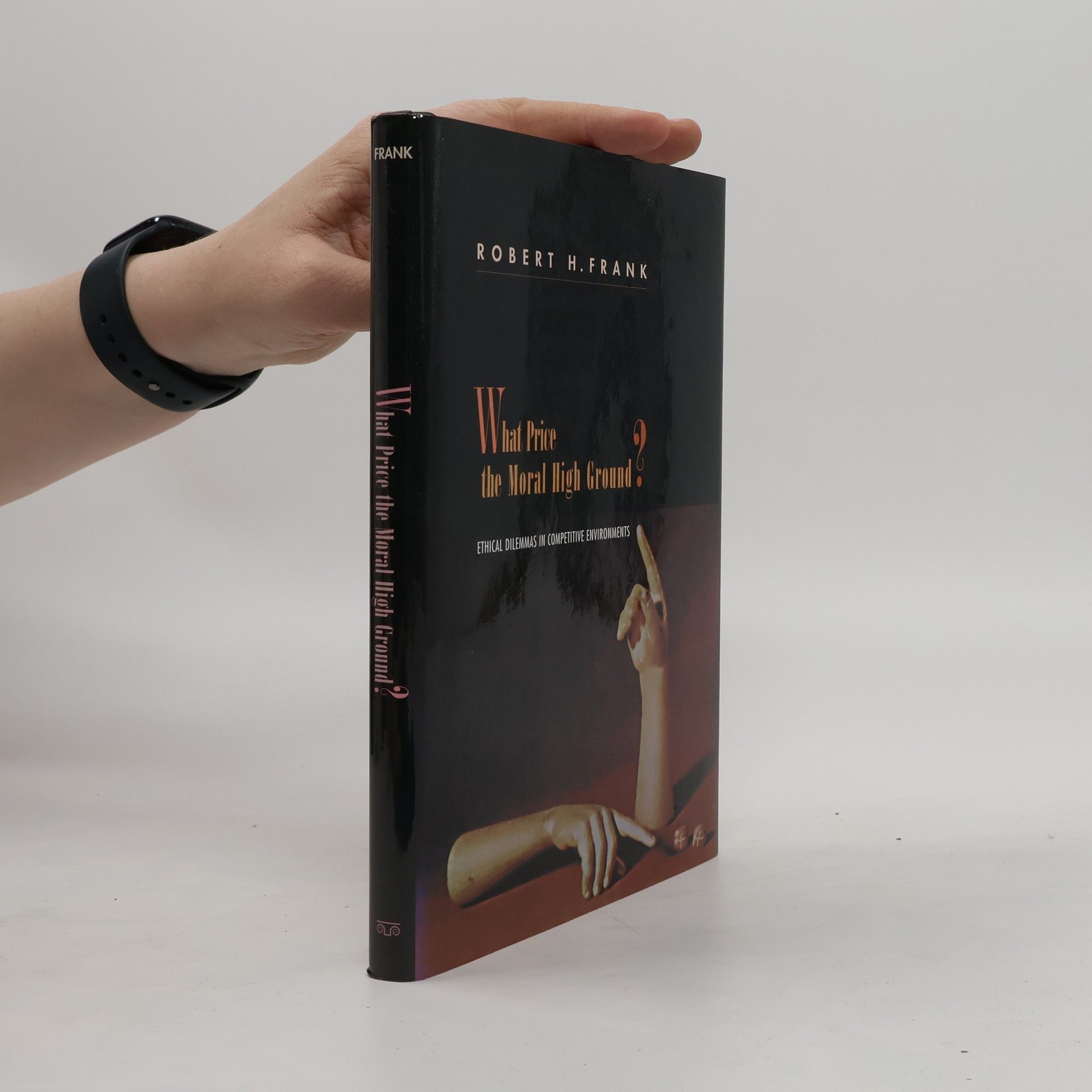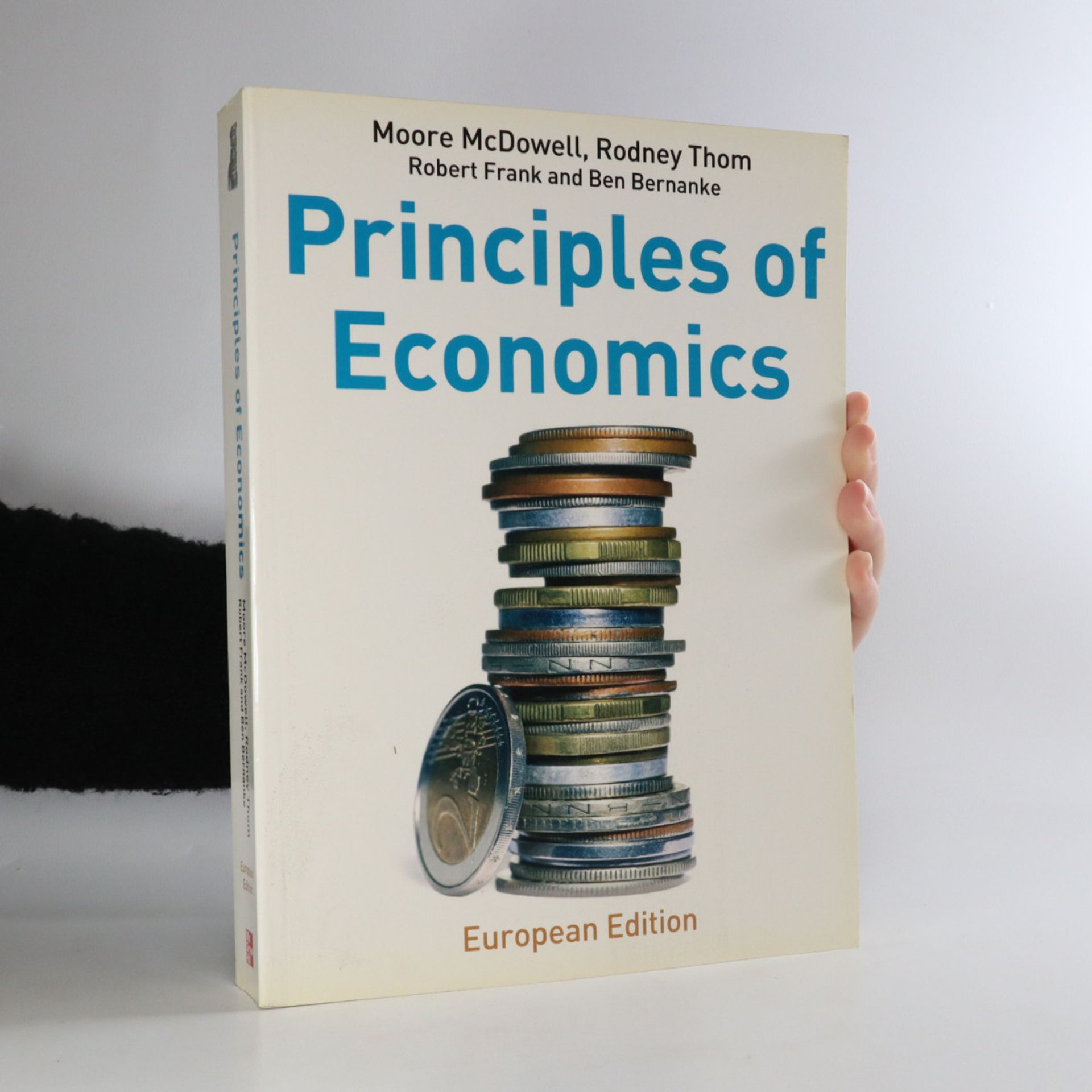In this book, I make use of an idea from economics to suggest how noble human tendencies might not only have survived the ruthless pressures of the material world, but actually have been nurtured by them.
Robert Frank Books
Robert H. Frank is a distinguished economist and author whose work delves into economic principles and their societal impact. Through his writings and his column in The New York Times, he offers insightful perspectives on the complexities of the modern economy. His analyses illuminate how economic forces manifest in everyday life, providing readers with tools to understand and navigate the economic landscape.







Seven stories
- 124 pages
- 5 hours of reading
After completing his seminal photography book The Americans in 1958, Robert Frank put aside the still image and concentrated throughout the 1960s on film-making. He only returned to still photography in the 1970s, using a Polaroid camera with black-and-white positive/negative film. These images were frequently layered with text, which Frank inscribed by hand onto the Polaroid negative. He found that these works allowed him more freedom to "destroy that image, that perfect image." In recent years Frank has worked almost exclusively with Polaroids, exploring the collage and assemblage possibilities of the instant photograph.Originally announced as Robert Polaroids , This slipcased collection of small, staple-bound books represents a new stage in the practice of a remarkable artist who continually challenges the limits of photography and film, and strives to avoid repeating himself. It brings together seven sequences of single new images compiled by Frank. As always, the photographs and stories relate Frank's life and milieu--his homes in Mabou and New York, for example, or trips to China and Spain.
Robert Frank in America
- 195 pages
- 7 hours of reading
Because of the importance of Robert Frank’s The Americans; because he turned to filmmaking in 1959, the same year the book appeared in the United States; and because he made very different kinds of pictures when he returned to still photography in the 1970s, most of Frank’s American work of the 1950s is poorly known. This book, based on the important Frank collection at the Cantor Arts Center at Stanford University, is the first to focus on that work. Its careful sequence of 131 plates integrates 22 photographs from The Americans with more than 100 unknown or unfamiliar images to chart the major themes and pictorial strategies of Frank’s work in the United States in the 1950s. Peter Galassi’s text presents a thorough reconsideration of Frank’s first photographic career and examines in detail how he used the full range of photography’s vital 35mm vocabulary to reclaim the medium’s artistic tradition from the hegemony of the magazines.
The lines of my hand
- 102 pages
- 4 hours of reading
After The Americans, The Lines of My Hand is arguably Robert Frank’s most important book and without doubt the publication that established his autobiographical, sometimes confessional, approach to bookmaking. The book was originally published by Yugensha in Tokyo in 1972, and this new Steidl edition, made in close collaboration with Robert Frank, follows and updates the first US edition by Lustrum Press of 1972. The Lines of My Hand is structured chronologically and presents selections from every stage of Frank’s work until 1972—from early photos in Switzerland in 1945–46, to images of his travels in Peru, Paris, Valencia, London and Wales, and to contact sheets from his 1955–56 journey through the US that resulted in The Americans and made him famous. Here too are intimate photos of Frank’s young family, later photo-collages and stills from films including Pull My Daisy (1959) and About Me: A Musical (1971). This structure itself mirrors the rhythm of Frank’s life but it is his short personal texts, like diary entries, that fully bring his voice into the book. In its original combination of text and image, its fearless self-reflection, and its insistence on photography and film as equal though different aspects of the artist’s visual language, The Lines of My Hand has become an inspiration for many photographers—not least Robert Frank himself, who continues and expands this approach in the visual diaries he makes today.
What Price the Moral High Ground?
- 256 pages
- 9 hours of reading
Drawing on research Robert Frank has conducted and published since 1990, he challenges the familiar homo economicus stereotype by describing how people create bonds that sustain cooperation in one-shot prisoner's dilemmas.
"War is over; the heroic French population reaffirms superiority. Love, Paris, and Flowers but London was black, white, and gray, the elegance, the style, all present in front of always changing fog. Then I met a man from Wales talking about the Miners and I had read "How Green Was My Valley." This became my only try to make a 'Story'." --"Robert Frank" This magnificent new edition of "London/Wales," which features never-before-seen photographs, juxtaposes Frank's images of the elegant world of London money with the grimy working-class world of postwar Wales--bankers opposite coal miners. It brings together two distinct bodies of work, and reveals a significant documentary precedent for "The Americans." In also offers an important view of Frank's development, demonstrating an early interest in social commentary, in the narrative potential of photographic sequencing, and innovative use of the expressionistic qualities of the medium.
In November of 1991 Robert Frank went to Beirut on a commission to photograph the city's devastated downtown in the aftermath of the Lebanese civil war (1975-1990). Much of the work he did there, together with that of five other photographers with whom he shared the assignment, was put together in Beirut City Centre by Editions du Cypres in 1992. Alongside that commissioned work, he also made Polaroids of the city and its environs, which, on his return home, he stowed away in his studio. It was only many years later that he considered those images again, and used them to create a sketchbook's worth of Polaroid collages. Come Again is a facsimile reprint of that notebook. In recent years Frank has worked almost exclusively with Polaroids, exploring the collage and assemblage possibilities of the instant photograph. Come Again, which comes as a sewn softcover in a paper bag, printed with special four-color matt inks and a Polaroid varnish, offers insight into the early stages of Frank's experimentation with the Polaroid and presents a previously unseen artist's book.
Peru
- 48 pages
- 2 hours of reading
Writing from New York in March 1949, Robert Frank sent home to his mother in Switzerland a birthday gift of a book maquette of a series of photographs he had made during a visit to Peru. Frank made an identical book for himself and one of each of these two dummies now resides in the collections of the Museum of Modern Art, New York, and National Gallery of Art, Washington. A few of these images are well-known in Frank’s oeuvre but previously the entire series had only ever been seen by a small number of people. This book presents for the first time the complete sequence of images, based on the original book Frank had conceived and realised under his direction. Peru is a work of major historical significance in both the artist’s history and the history of photography.
Paris is the first time that the significant body of photographs which Robert Frank made in Paris in the early 1950's have been brought together in a single book. His visit to Paris in 1951 was his second return to Europe after he had settled in New York City in 1947 and some of the images he made during that visit have become iconic in the history of the medium. The 80 photographs selected by Robert Frank and Ute Eskildsen suggest that Frank's experience of the new world had sharpened his eye for European urbanism. He saw the city's streets as a stage for human activity and focused particularly on the flower sellers. His work clearly references Atget and invokes the tradition of the flaneur.
Principles of Economics
- 912 pages
- 32 hours of reading
Avoiding excessive reliance on formal mathematical derivations, this text presents concepts intuitively through examples drawn from familiar contexts. It relies throughout on a shortlist of core principles which it reinforces repeatedly by illustrating and applying each in numerous contexts.
